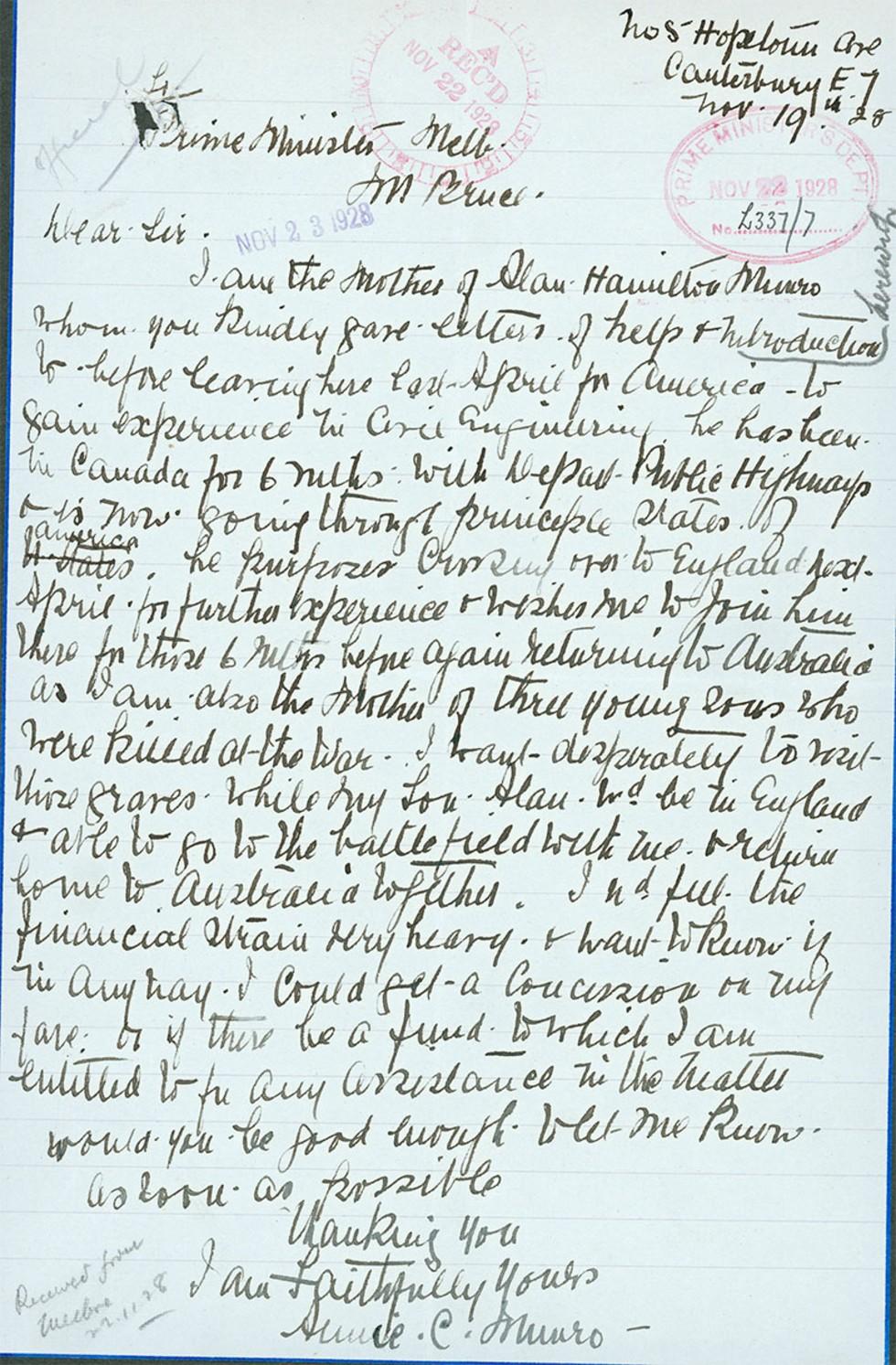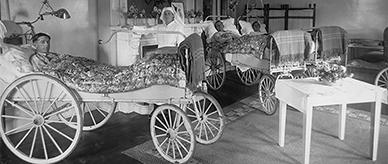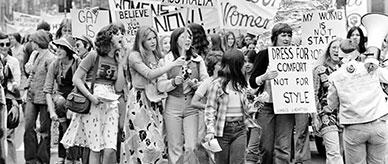


Transcript
[Handwritten in pencil in top left corner:] Official
[Stamped in red ink:] REC'D [received] NOV 22 1928
[Stamped in red ink:] PRIME MINISTER'S DEPT Nov 22 1928 [with handwritten reference number:] L337/7
[Stamped in purple ink:] NOV 2 1928
No 8 Hopetoun Ave
Canterbury E.7
Nov. 19th 28
To
Prime Minister Melb.
SM Bruce.
Dear Sir,
I am the mother of Alan Hamilton Munro whom you kindly gave letters of help and introduction to before leaving here last April for America – to gain experience in Civil Engineering he has been in Canada for 6 mths [sic] with Dept Public Highways & is now going through principle States of America. He purpozes [sic] crossing over to England next April for further experience & wishes me to join him there for those 6 mths [sic] before again returning to Australia[.] As I am also the mother of three young sons who were killed at the war I want desperately to visit those graves while my son Alan w'd [would] be in England & able to go to the battlefield with me and return home to Australia together. I w'd [would] feel the financial strain very heavy & want to know if in any way I could get a Concession on my fare: or if there be a fund which I am entitled to for any assistance in the matter[.] Would you be good to let me know as soon as possible[.]
Thanking you
I am faithfully yours
Annie C. Munro
[Handwritten in pencil in bottom left corner:] Received from [illegible] 22.11.28
About this record
This letter was written to Prime Minister Stanley Bruce in 1928 by Annie Munro, a mother who lost three sons in the First World War. Annie asked for government assistance to visit her sons’ graves, but her request was denied.
Educational value
- Australia’s distance from the fighting meant that it was impossible to return the war dead to their home country. Instead, they were buried in the huge British and Commonwealth war cemeteries across Europe, the Middle East and Asia. Many families wrote to the Australian Government requesting details about where and how their loved ones died, and where they were buried.
- Due to the distance and the cost of travel at this time, few family members could visit Australian war graves overseas. This led to the erection of numerous memorials across the cities and towns of Australia.
- Annie Munro, a widow, endured a huge loss to her family with the death of three of her sons. Norman, 19, died at Gallipoli three days before the Australians were evacuated. Despite exhaustive investigations, his grave was never found. Roy, 23, was killed in France, and Eric, 26, died in London during bombardment by enemy aircraft. Both were buried near where they died. In 1918, Annie Munro signed the consent form for Jack Munro, 20, to enlist. With the Armistice signed on 11 November 1918, Jack never saw active service.
- The government sent photographs of identified graves to soldiers’ next of kin. By 1923, Annie had still not received photographs of Roy’s and Eric’s graves. She later received a photograph of Roy’s resting place, but it is not known whether she was ever sent one of Eric’s grave.
- In 1928, Annie wrote to the Prime Minister, Stanley Melbourne Bruce, asking for financial assistance to travel overseas to see her sons’ graves. ‘I am…the mother of three young sons who were killed at the War. I want desperately to visit those graves.’ Her request was refused. The government denied all such applications because of the great demand such a precedent would create.
- Following the war, commercial companies arose, close to where the fighting had taken place, to offer battlefield and gravesite visits. However, this was costly and out of reach for many. The desire to make this pilgrimage remains strong in Australian society even today.
Related themes
Need help with your research?
Learn how to interpret primary sources, use our collection and more.


